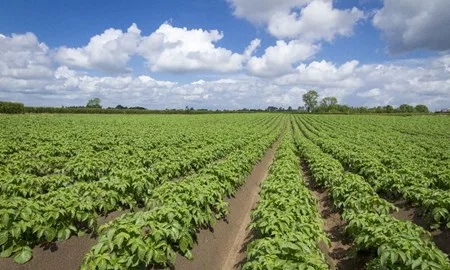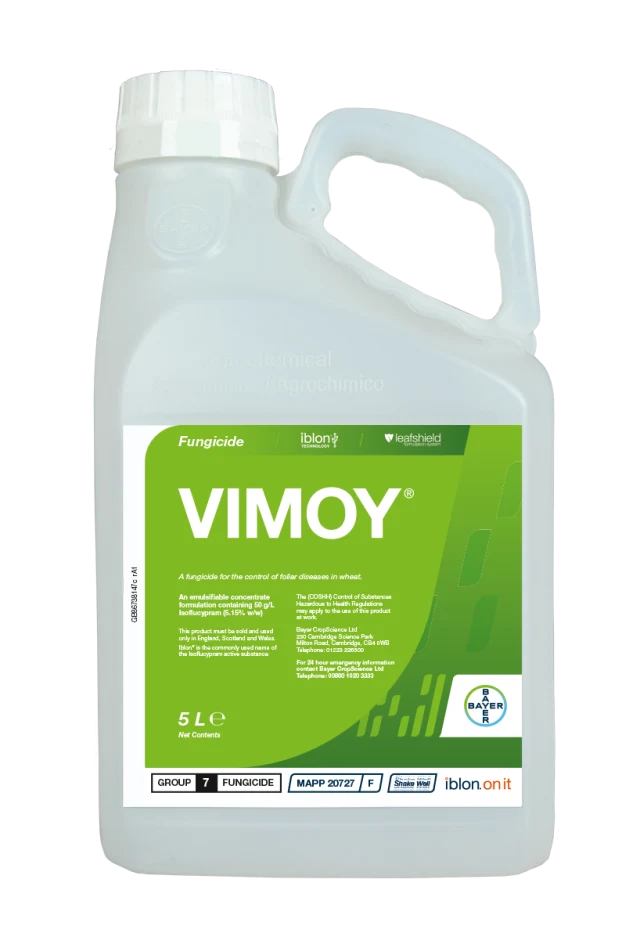Published on 5th June 2024
Local Insights
South East: Five agronomy decisions to consider in June and July

Richard Prankerd assesses what’s left to do in this year’s crops, and turns an eye towards oilseed rape establishment next season.
Current situation
There are some promising wheats around the southeast, but they are under threat from high disease pressure, thanks to lots of rainfall events.
There’s more Septoria in Hampshire than I’ve seen for many years, more so than in East Kent. That applies to all varieties, including the likes of Mayflower, Extase and Typhoon, where robust T1s and T2s have been recommended to control aggressive Septoria lower in the canopy.
With further rainfall forecast that pressure doesn’t look like easing anytime soon.
The other disease of the year is brown rust, which has caused problems in Crusoe, as well as some other susceptible varieties. The mild winter meant infections were deep-rooted in the plants early – boots were turning brown from the end of March when walking crops – and the lack of opportunity to apply T0s meant it wasn’t eradicated at that stage.
Robust rates of good rust-acting SDHI fungicides at T1, such as Vimoy (isoflucypram), have done a good job of protecting the canopy, but where leaf two was left exposed between T1 and T2 timing in high pressure scenarios re-infection has occurred and we are now seeing that the best results have come where a T1.5 was applied.
Where oilseed rape survived the various pest and weather issues, the majority is now looking semi-decent. It finally finished flowering in mid-May after starting as early as I can remember.
Potato crops are still being planted in the southeast while others have already emerged and are looking well in rows.
Richard’s agronomy tips for June and July
1. Brown rust, Septoria and Fusarium could all threaten at T3
With the weather warming up, it’s very likely that will favour brown rust even more and will need looking after right through to harvest. The disease cycles in just five days, so any variety with susceptibility, which when you look through the Recommended List is virtually all of them bar Skyfall, could be at risk.
An application of a strobilurin-containing fungicide plus prothioconazole, will keep on top of Brown Rust while looking after the Fusarium threat could be a good option, particularly where a strong Septoria product was used at T2.
From our products that could lead you towards Firefly (fluoxastrobin + prothioconazole) at 1.35 L/ha, which will deliver the 150g/ha of prothioconazole needed for Fusarium suppression.
Other options could be an SDHI fungicide, such as Vimoy – if it hasn’t been used previously in the programme – or Elatus Era (benzovidiflupyr + prothioconazole) could also be used as as long as two SDHIs haven’t already been applied. Using an SDHI will also help address a continued Septoria threat, and add physiological greening benefits, albeit at a higher cost.
If you’re confident both brown rust and Septoria have been covered by earlier sprays, and you’re looking for out and out Fusarium control, then 0.55 L/ha of Proline (prothioconazole) could also be used.
2. Timing OSR desiccation crucial
Correct timing of oilseed rape desiccation is crucial to mitigate against any yield losses or oil content reductions, as well as avoiding any rejections for red seed.
The best way, albeit maybe not the easiest to physically do, is to fight your way into the crop to find a representative part of the whole field. Sub-sample around 20 pods from an area of the canopy that is representative of the maturity of most of the crop.
Open pods and see how many seeds have changed from green to brown. You’re looking for at least two-thirds of the seeds in at least 15 of the pods to have changed colour for the earliest possible desiccation timing. Ideally check this result in other parts of the field.
Use at least 1080g/ha of Roundup (glyphosate) using a medium-coarse spray quality. Higher doses will be required if you’re also targeting perennial weeds, while higher water volumes of 200 L/ha can improve coverage in thicker crops.
3. Look for key characteristics for next season’s oilseed rape variety
Early establishment and rapid growth from both drilling and again in spring are key characteristics to look for in oilseed rape varieties. Fast establishment is obviously important to help get away from both cabbage stem flea beetles and slugs, which can be overlooked.
Other traits to consider are obviously good disease resistance for Phoma – especially if drilling early – and light leaf spot, as well as pod shatter resistance.
Our Dekalb range of oilseed rape varieties can help with all of those, including DK Exstar, which is available from most distributors.
It’s worth using the various field days, demonstrations and events, such as Cereals, to have a look at what is available.
4. Consider buying a Magic Trap to help time OSR drilling
Our development team has worked on a way to digitalise yellow water traps to create a monitoring system linked to your mobile phone.
These “Magic Traps” use a high-definition camera to photograph and assess the number of cabbage stem flea beetles to have entered the trap and send the data direct to your phone.
Last year, growers and agronomists trialling the device used the information to monitor migration numbers to understand when speak migration had passed before drilling oilseed rape when numbers were beginning to fall.
You can purchase a Magic Trap from the Bayer e-store for £169 plus a subscription. Potentially, these can be networked together to provide more robust data from an area than just using one in a field.
5. Plan blight strategies given new strain threats
Attention through June and July will be on blight strains in potato crops. New strains affecting the performance of CAA fungicides like mandipropamid and the OSBPI fungicides oxathiapiprolin were discovered across the Channel last year, so we have to be even more vigilant and prepared than ever before.
While it has not been found in the UK yet, most blight strains find their way here eventually.
Fortunately, other blight fungicides, including Infinito (fluopicolide + propamocarb) have so far shown no signs of insensitivity against all blight strains currently found. A strategy of using Infinito at various intervals through the blight programme is worth considering. Infinito can be used at a maximum individual dose of 1.6 L/ha and a total overall dose of 6.4 L/ha effectively giving up to four applications in a season.
I’d suggest keeping two of those applications back for towards the end of the programme to help protect against tuber blight and mix in the other two applications earlier.
Try to avoid using any blight fungicide treatment twice in succession – that’s one of the practices that increased risk of resistance development in the Netherlands and elsewhere.
Acknowledgements
Vimoy contains isoflucypram. Firefly contains fluoxastrobin + prothioconazole. Elatus Era contains benzovidiflupyr + prothioconazole. Proline contains prothioconazole. Roundup contains glyphosate. Infinito contains propamocarb + fluopicolide. Vimoy, Firefly, Elatus Era, Proline, Roundup and Infinito are registered trademarks of Bayer. All other brand names used are Trademarks of other manufacturers in which proprietary rights may exist.
Use plant protection products safely. Always read the label and product information before use. Pay attention to the risk indications and follow the safety precautions on the label. For further information, including contact details, visit www.cropscience.bayer.co.uk or call 0808 1969522






